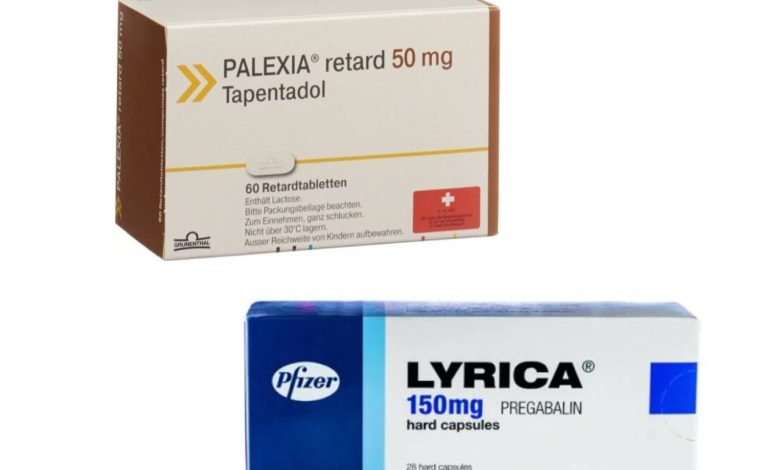Can You Take Palexia and Lyrica Together?

What is Palexia?
Palexia is a prescription opioid pain medication that works by binding to opioid receptors in the brain and spinal cord, which can help to reduce pain signals in the body. Palexia is typically used to treat moderate to severe pain, such as pain associated with cancer, surgery, or injuries.
While Palexia is an opioid, it has a unique mechanism of action that sets it apart from other opioids. Unlike other opioids, Palexia also acts on the noradrenergic system, which helps to increase the levels of noradrenaline in the brain. Noradrenaline is a neurotransmitter that plays a role in regulating pain perception and mood, which can help to enhance the analgesic effects of Palexia.
What is Lyrica?
Lyrica is a prescription medication that is used to treat various types of pain, including neuropathic pain, which is pain caused by damage or dysfunction of the nervous system. Lyrica works by binding to a specific type of calcium channel in the nervous system, which helps to reduce the release of certain neurotransmitters that are involved in pain signaling.
In addition to its pain-relieving properties, Lyrica is also used to treat anxiety disorders, such as generalized anxiety disorder and social anxiety disorder. Lyrica has also been shown to be effective in treating certain types of epilepsy, such as partial-onset seizures.
Can You Take Palexia and LyricaTogether?
Yes, you can take both Palexia and Lyrica together because studies have shown that when administered together they provide superior pain relief. However, some factors need to be considered before combining the two drugs. We will further explore the benefits and risks of taking Palexia and Lyrica together.
Benefits of taking Palexia and Lyrica together
When taken together, Palexia and Lyrica can provide a more comprehensive approach to pain management. Palexia works by reducing pain signals in the brain and spinal cord, while Lyrica works by reducing the release of certain neurotransmitters that are involved in pain signaling.
By combining these two drugs, it may be possible to achieve better pain relief with lower doses of each medication. This can help to minimize the risk of side effects associated with high doses of either medication, such as sedation, respiratory depression, and constipation.
Additionally, Palexia and Lyrica have different mechanisms of action, which means they can target different types of pain. For example, Palexia may be more effective for treating acute pain, while Lyrica may be more effective for treating neuropathic pain.
Risks of taking Palexia and Lyrica together
While it is generally safe to take Palexia and Lyrica together, there are some risks that need to be considered. Both drugs can cause drowsiness and dizziness, which can increase the risk of falls and other accidents. Additionally, both drugs can cause respiratory depression, which is a potentially life-threatening side effect that can occur when breathing becomes severely slowed or stopped.
Another potential risk of taking Palexia and Lyrica together is the risk of drug interactions. Both drugs can interact with other medications, such as other opioids, benzodiazepines, and muscle relaxants, which can increase the risk of side effects and overdose.
Finally, both Palexia and Lyrica can be habit-forming, which means they can lead to physical dependence and addiction if not used as directed. Patients should be closely monitored for signs of addiction, such as cravings for the medication or withdrawal symptoms when the medication is stopped.
How to prevent addiction while Palexia and Lyrica together
Palexia (tapentadol) and Lyrica (pregabalin) have the potential to be habit-forming and can lead to physical dependence and addiction if not used as directed. Here are some tips on how to prevent addiction when taking Palexia and Lyrica:
1. Follow your doctor’s instructions: It is essential to take these medications exactly as prescribed by your doctor. Do not increase or decrease the dose or take the medication more frequently than recommended. Also, do not stop taking the medication suddenly, as this can lead to withdrawal symptoms.
2. Communicate with your doctor: It is important to keep your doctor informed about how you are feeling and any changes in your pain levels. Your doctor may need to adjust your medication or recommend alternative treatments.
3. Be aware of the risks: Both Palexia and Lyrica have the potential to be habit-forming. Knowing the risks and symptoms of addiction can help you and your doctor identify any potential problems early.
4. Avoid alcohol and other drugs: Using alcohol and other drugs, including over-the-counter medications, while taking Palexia and Lyrica can increase the risk of side effects and overdose. It is important to discuss any other medications you are taking with your doctor.
5. Store the medication safely: Keep your medication in a safe place, out of reach of children and other people who may abuse the medication. Do not share your medication with anyone else, even if they have similar symptoms.
6. Seek help if needed: If you are concerned about addiction or have experienced any symptoms of addiction, such as cravings or withdrawal symptoms, talk to your doctor. They may be able to refer you to a specialist or addiction treatment program.
In summary, Palexia and Lyrica can be effective in managing chronic pain when used as directed. To prevent addiction, it is important to follow your doctor’s instructions, communicate openly with your doctor, be aware of the risks, avoid alcohol and other drugs, store the medication safely, and seek help if needed.



